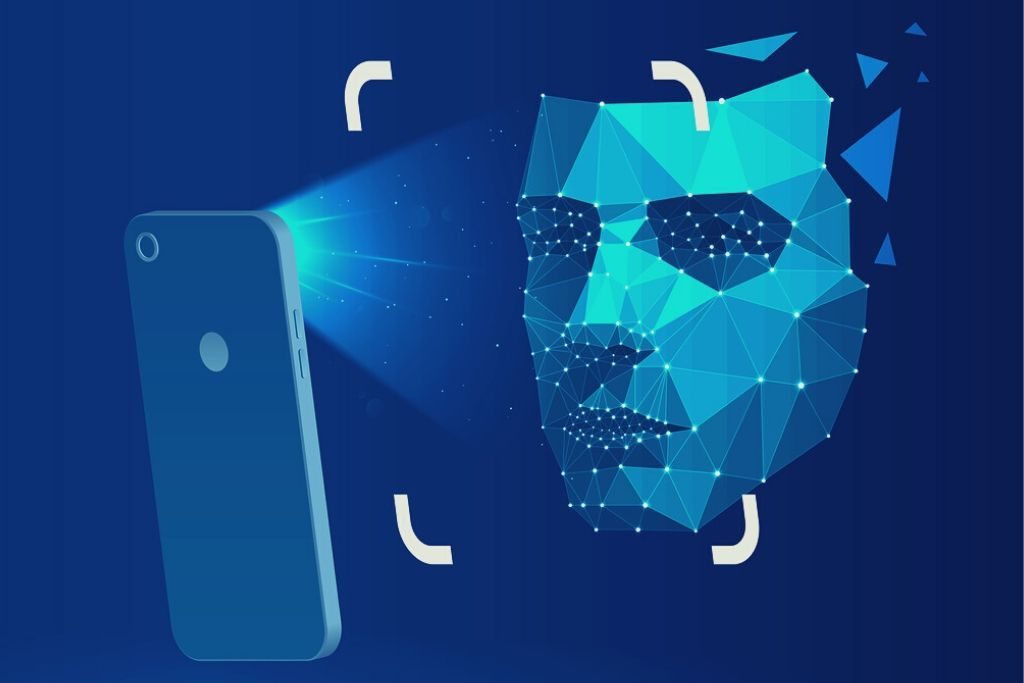We’ve come a long way from ringing the doorbell or even needing keys to enter our homes, offices and buildings. Technology has given us smartphone apps, finger scanners and key cards. And now, facial recognition is making access even more convenient and secure. Nevertheless, there’s still a lot of mystery and misconceptions about automatic face recognition — one of the most important recent leaps in access technology.
There are many variations of face recognition technologies, cameras and scanners. The evolution of facial recognition is taking place at breakneck speed. This creates both benefits and challenges in relying on biometric identification tech.
Here’s a look at where facial recognition came from, where it is now, and what’s around the corner.
How Facial Recognition Works

“Facial recognition started seriously about twenty-five years ago,” explains Anil Jain, a biometrics recognition expert and distinguished computer science professor at Michigan State University.
“But the performance to the early automated facial recognition systems was pretty poor,” he continues. “Even when we were comparing mugshots or driver’s license photos under controlled conditions, the system’s accuracy was still very low.”
Prof. Jain is referring to some of the pioneering facial recognition research and technology in the 1960s. Professor Woody Bledsoe is often credited as bringing the field to the forefront by creating the first facial mapping systems.
Today’s facial recognition software is light years ahead of Prof. Bledsoe’s work. Verifying identity via facial recognition now only takes a matter of seconds. And with increasing levels of accuracy.
“We got to the point of 99 percent accuracy when users are in constrained environments and follow instructions,” says Prof. Jain. “The challenge became in unconstrained conditions, where you can’t directly command or control people’s expressions.”
Technology has all but overcome the hurdle of unrestrained conditions. The newest smartphones don’t ask users to “smile” or “look into the camera.” That’s because the software builds out a unique template of users’ faces right from the beginning.
To create these unique templates for each user, pictures are taken from multiple angles. This process is called enrollment and assures that a users’ face can be recognized under any circumstances.
Whether people are outdoors, got new glasses, or grew a beard, facial recognition today is rarely wrong. And for the most part, it improves convenience and security. Despite persisting ethical debates, the future of facial recognition looks bright and promising.
The Challenges of Face Recognition
The market for facial recognition is expected grow from $3.2 billion in 2019 to an estimated $7.0 billion by 2024. But some of the major obstacles along the way include user privacy, data security and even racism.
For example, the National Institute of Standards and Technology (NIST) recently found that facial recognition software had lower accuracy regarding certain races and skin tones. It was harder to identify Asians accurately and African-American females had higher rates of false positives.
There are also data security and privacy concerns around which images can legally be used to build facial recognition models. With the increase in online activity and the prevalence of cameras, companies or governments can easily build a 3D facial model of people without knowledge or consent.
Would you be happy if your facial data is being used by a company or government without your consent? For example, Illinois biometric privacy law makes it illegal to take someone’s photo without consent.
Prof. Anil Jain, Michigan State University.
That’s not to mention the general concerns of a “Big Brother” type surveillance-state society. But states like Illinois, along with other regulations like the General Data Protection Act (GDPR), and leveling the playing field when it comes to user data privacy and ownership.
Tomorrow’s facial recognition systems might help keep known criminals away from schools or deeper integration with smart buildings and homes. Banking transactions or entering an airport can take place securely in a matter of seconds. Jain predicts that machine learning will play a big role, adjusting to as users face as they age over time.
Thankfully, governments and private industries are working hand-in-hand for policy solutions to address public concerns over facial recognition. It’s a technology that is certainly here to stay.






